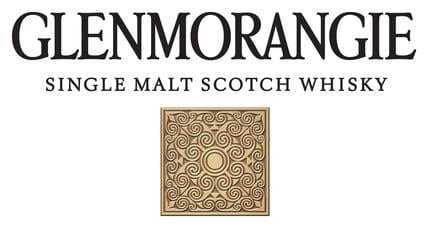Glenmorangie distillery information
On the Western coast of the Northern Highlands, we find the city of Tain, which is home to the Glenmorangie distillery. Initially established as a brewery, in 1843 it was transformed into a distillery by William and John Matheson, the former having been a partial owner of the Balblair distillery. Seeing most of his funds were invested into the purchase of the brewery and surrounding lands, the 2 stills originally equipping the distillery were second-hand gin stills. They traditionally have much longer necks than whisky stills, and as a result, there is much more time for the vapors and the copper to interact. The gin-stills turned out to be a blessing, as they give the Glenmorangie a unique character. The stills used today are exact replicas of the original stills from 1843, and they stand almost 8 meters (26 feet) tall, the thing, fragile-looking necks taking up 5 meters (17 feet), making making them the longest stills of any whisky distillery in Scotland.
In 1887, the distillery was rebuilt, and its stills equipped with steam coils; the first distillery to do so. In 1918 Glenmorangie changed hands to Macdonald and Muir, one of the main customers of the distillery at the time. Under their guidance, the distillery mostly provided whisky for blends. This changed in the 1970s, when the decision was made to put more emphasis on creating Single Malt instead. In 1970, the malting floor is closed, and the amount of stills is doubled from 2 to 4. In 1990, the amount of stills doubled again to 8. Macdonald & Muir changed name to the Glenmorangie plc in 1996, and ended up purchasing the Ardbeg distillery on Islay the following year.
In 2004, Glenmorangie plc buys the Scotch Malt Whisky Society, and in 2005 it itself is purchased by Louis Vuitton-Moët Hennessy, when Macdonald put his shares up for sale. Between October 2008 and March 2009, the distillery closes for the addition of 2 extra pairs of stills, bringing the total to 12.
Glenmorangie’s water is one of the few distilleries to use hard water containing lots of minerals. Most other distilleries employ the use of soft water, as it’s deemed to produce better spirit. The minerals in the water also tend to build up residue on the inside of pipes. Minerals in the water might add different chemical congeners during fermentation that have an impact on the end-product. Glenmorangie was also the first distillery to experiment with using non-traditional casks for double maturation (including Madeira and Port, the latter now being widely used for the final finish of particular whiskies). The company owns a private forest on the northern slopes of the Ozark mountains in Missouri, United States. The wood sourced there is laid to dry for 2 years, and then is turned into casks that are used by the Jack Daniels distillery, before making their way back to Scotland to be used by for the first maturation of the whisky.
Glenmorangie whisky
The current core range of Glenmorangie contains the following whiskies:
- The Original; 10 Year Old, matured in ex-Bourbon casks.
- 18 Years Old; this whisky spends 15 years maturing in ex-Bourbon casks. 30% then is transferred into Spanish Olorosso casks (with the other 70% remainin in the original cask) where it rests for 3 more years. At that stage, both are blended together to create the 18 Years Old expression.
- 25 Years Old; matured in a variety of casks (including Bourbon, Olorosso and Burgundy), blended together in exact quantities.
- Astar; Astar is Gaelic for “Journey”, The oak used for maturation of this expression is sourced from the Ozark mountains in Missouri. This is an ageless whisky, though thought to be in the 9-10 Years Old age range.
- Lasanta; First matured for 10 years in ex-Bourbon casks, and then a further 2 years in Olorosso and PX Sherry casks from Spain.
- Nectar D’or; Starting with 10 years maturing in ex-Bourbon casks, 2 years of extra maturation then takes place using wine barriques from Sauternes in France.
- Quinta Ruban; Also matured 10 years in ex-Bourbon casks, to be followed by a further 2 years in port pipes from the Quintas or wine estates of Portugal.
- Signet; sourced from Glenmorangie whiskies of at least 30 Years Old.
Distillery info:
| Name | Glenmorangie |
| Region | Highlands |
| Logo |  |
| Status | Active |
| Founded | 1843 |
| Water source | Tarlogie Springs |
| Owned by | Louis Vuitton-Moët Hennessy |
| Address |
Glenmorangie Distillery +44(0) 1862 892 477 |
| Visitor centre | Yes |
| Website | https://glenmorangie.com/ |
| http://www.twitter.com/theglenmorangie | |
| http://www.facebook.com/pages/Glenmorangie/211304389010197 | |
| Community | N/A |
| Map |
Distillery Setup:
Component |
Capacity |
Quantity |
|---|---|---|
| Mash tun | 9.8 tonnes (full-lauter, stainless steel) | 1 |
| Washback | 50,000 litres litres | 12 (stainless steel) |
| Wash still | 11,400 litres | 6 |
| Spirit Still | 8,200 litres | 6 |
| Expected yearly output in LPA (Litres of pure alcohol) | 6,000,000 |
